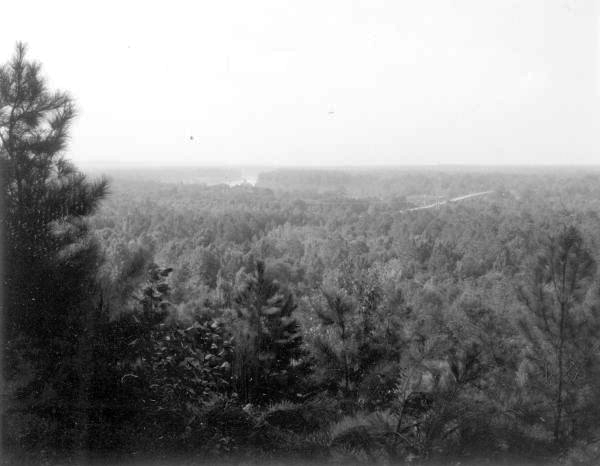
Courtesy Florida Memory
Given the scope of Florida woodlands in this ca. 1900 view along the Chattahoochee River, the Europeans who settled in Florida intent on plundering the riches of the newly discovered land could be, if not forgiven at least understood, for thinking the supply of lumber was inexhaustible. Whatever was not prairie or swamp was woods, full of live oak, Southern Yellow Pine, including long-leaf, and cypress, an estimated 28 million acres just waiting to be harvested.
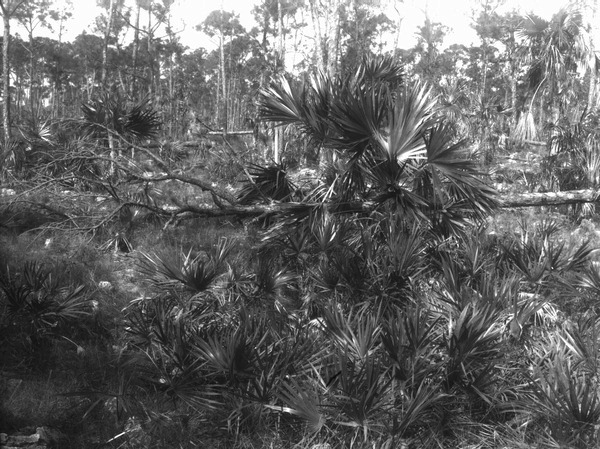
Courtesy Florida Memory
So, they did. Without much thought about sustainability or replanting, the cutting began to clear swaths of land. Take note of that next time you ride along an interstate. What is not swamp or prairie was once woods.
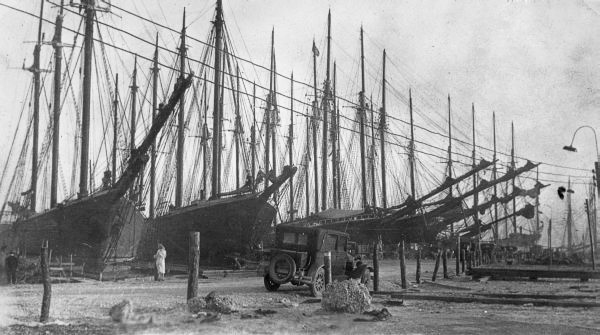
Courtesy Florida Memory
Most of Florida’s history occurred in the age of sail and wooden ships. The tall straight trees were perfect for masts; other woods of various strengths and lengths were perfect for other parts of ships, so shipbuilders were the first customers. In fact, when the U.S. took over Florida in 1821, one of the first official acts was to set up the Naval Live Oak Reservation (https://www.nps.gov/guis/planyourvisit/naval-live-oaks-area.htm) the nation’s first and only Federal tree farm. The shipping industry began the transition to steel ships after the Civil War, but wooden ships stayed in service well into the 20th Century, such as the lumber schooners pictured above, not abandoned until the 1920s. There were plenty of other customers; everything from houses and hotels to bars and barns were made of wood. As demand grew, so did the industry.
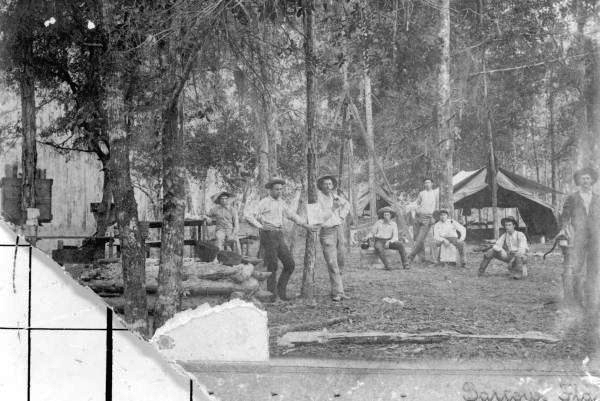
Courtesy Florida Memory
It was not a luxury job. Even close to lumber industry shipping centers like Cedar Key in 1880, camps looked, shall we say, ‘basic.’ That did not change much over time.
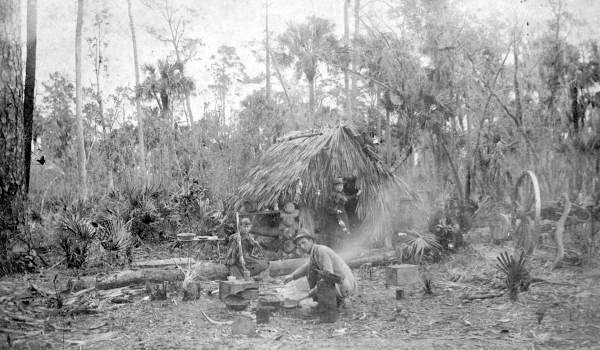
Courtesy Florida Memory
On the other side of the state, in Volusia County in 1895 this lumber camp could well be considered ‘more basic.’ But, the camps in the woods were the tip of the ax for the industry.
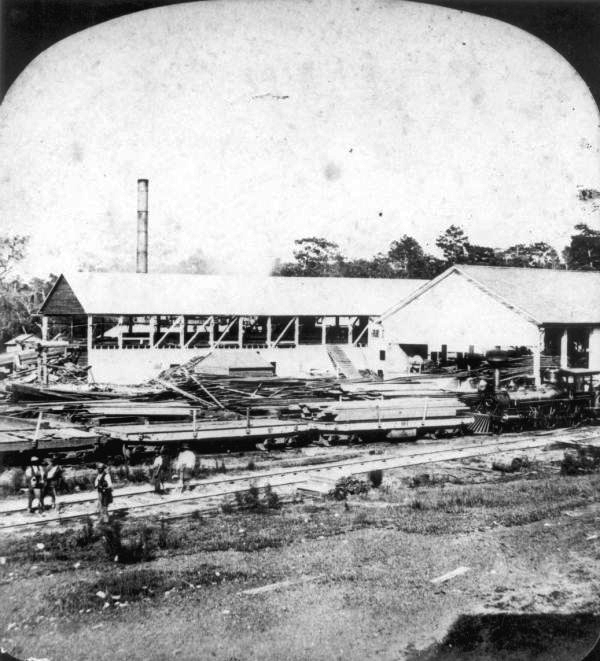
Courtesy Florida Memory
The sawmills were the more visible and state-of-the-art part of the business, such as the well known Drew and Bucki mill in Perry (pictured in 1875) Which grew to be one of the largest in the Southeast by the mid 1880s. (https://www.unf.edu/library/specialcollections/manuscripts/collections/Bucky_Family.aspx)
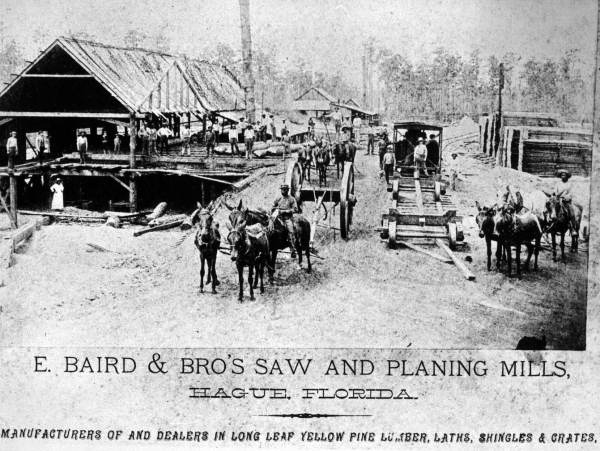
Courtesy Florida Memory
Not every mill adventure was as successful. The E. Baird and Bro’s mill near Gainesville in 1880 turned out to be only a brief segment in the story of a family of Floridians who left something of a legacy in that part of the state before a fire forced a change in their business plan (http://www.dmarlin.com/pastprologue/blog/baird/).
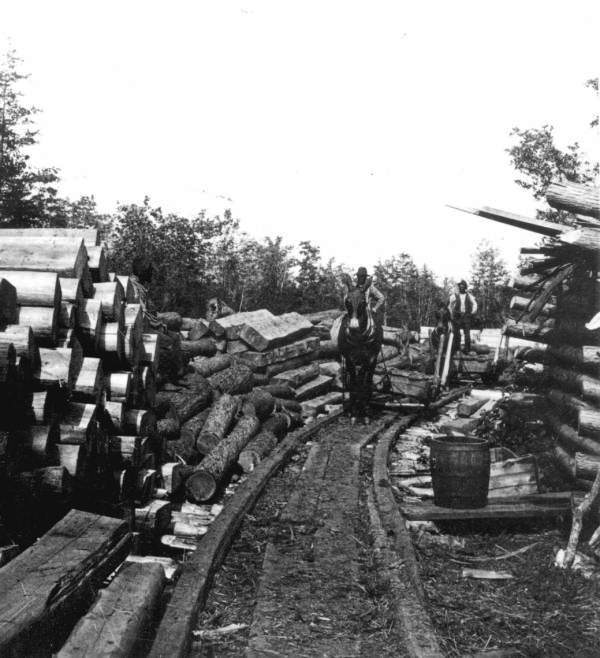
Courtesy Florida Memory
However big and profitable the Florida lumber industry got, it boiled down to hauling wood out of forests, whether it was by mule on a skid way in 1898, or
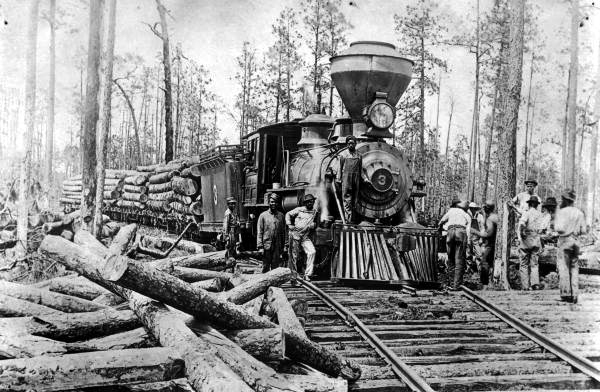
Courtesy Florida Memory
on temporary and unreliable rails by steam locomotive, such as this derailed one in 1900. Railroad historians say virtually every Florida county had such local rail lines at one time or another, some with great stories to tell (https://medium.com/florida-history/the-marvelous-wooden-railroad-57593d01cc4f).
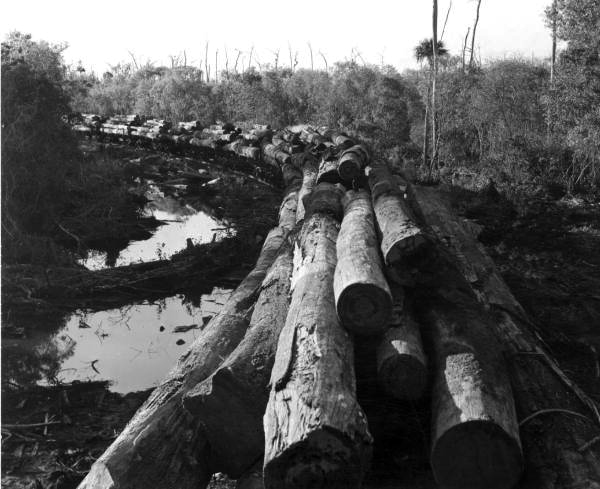
Courtesy Florida Memory
Whatever the hardships and problems, haul they did, year after year, ton after ton, board foot after board foot,
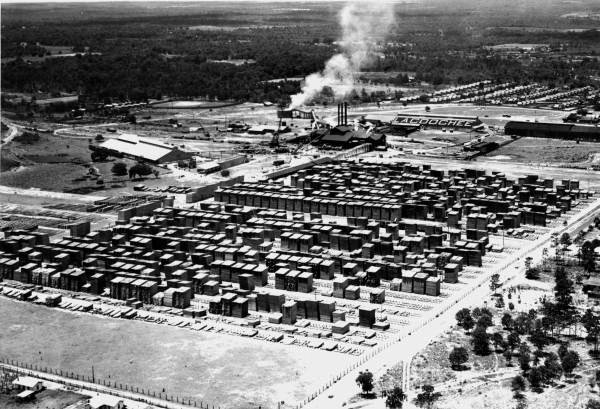
Courtesy Florida Memory
cutting, slicing, processing, stacking and shipping Florida’s inexhaustible resource to the world,
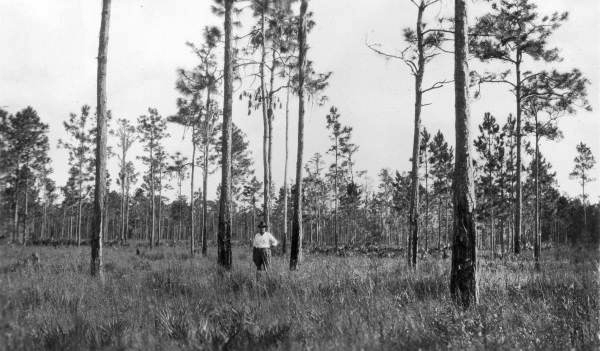
Courtesy Florida Memory
until around 1930, when they realized “inexhaustible” was not the right word after all.
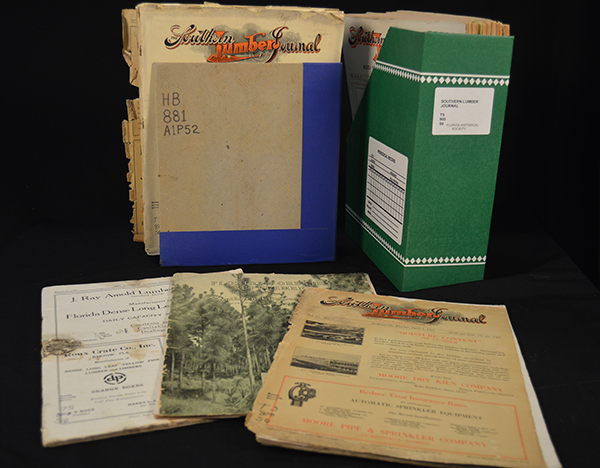
It was a time of transition for the industry, and a collection of a trade magazines found in the archives of the Library of Florida History documents the changes from the inside.
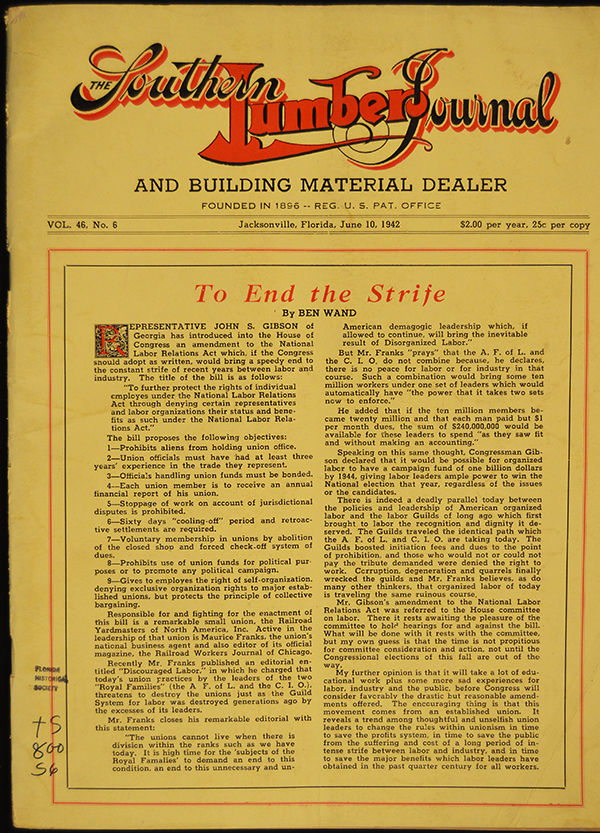
The Southern Lumber Journal and Building Material Dealer began in Jacksonville in 1896, covering the lumbering, milling and turpentine industries throughout the Southeast monthly until well into the 1940s. The Library of Florida History collection is not a complete run, but it has individual issues dating from the late 1920s until 1942, a time of considerable change for those industries.
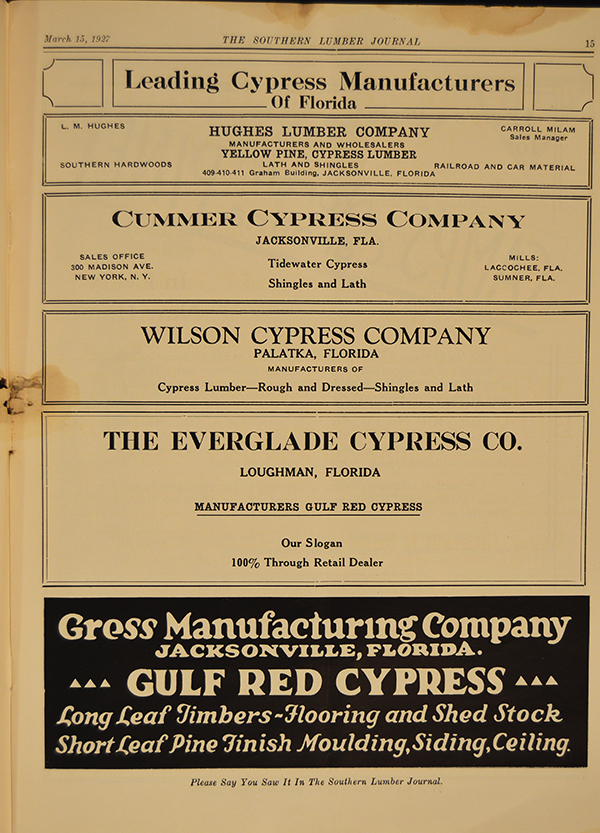
It has what you would expect in a professional trade magazine, including ads showing the scope of all facets of the industry, such as the specialized suppliers,
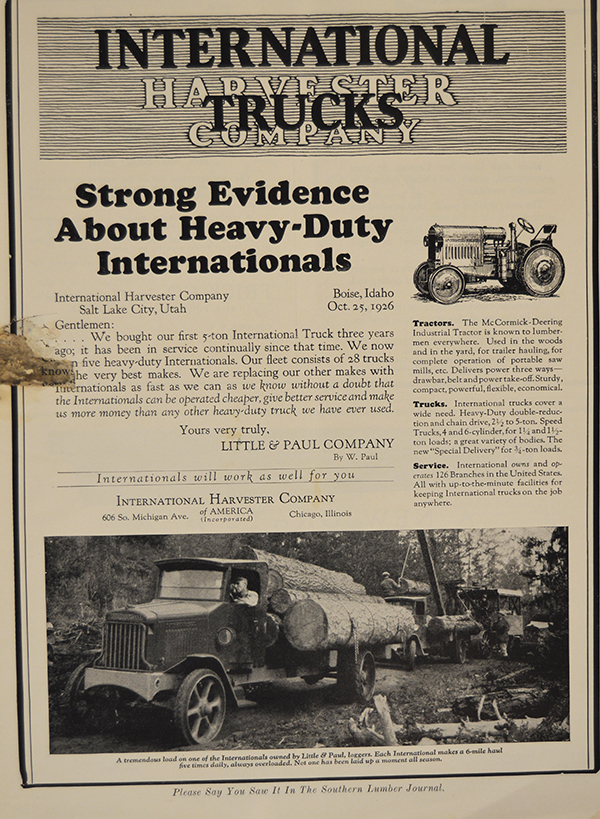
the emerging technology,
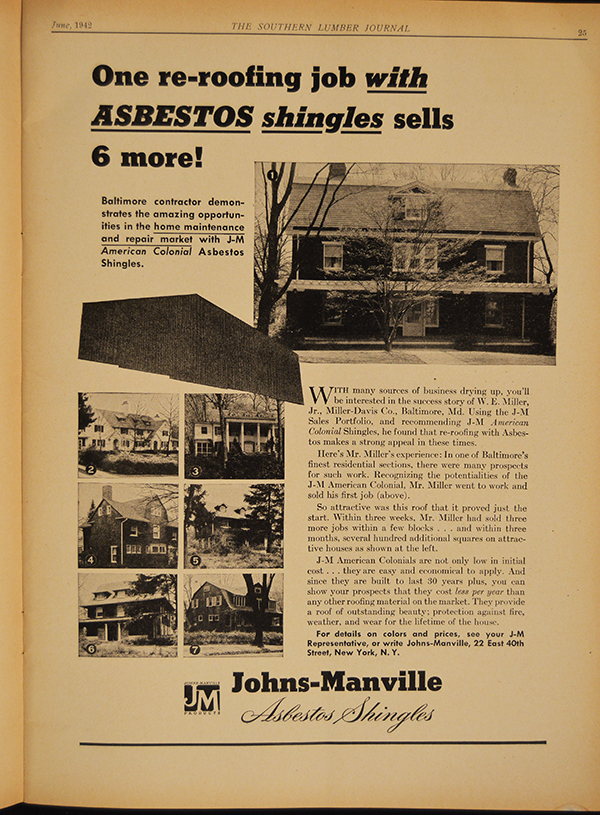
and new marketing opportunities, that seemed like good ideas at the time.
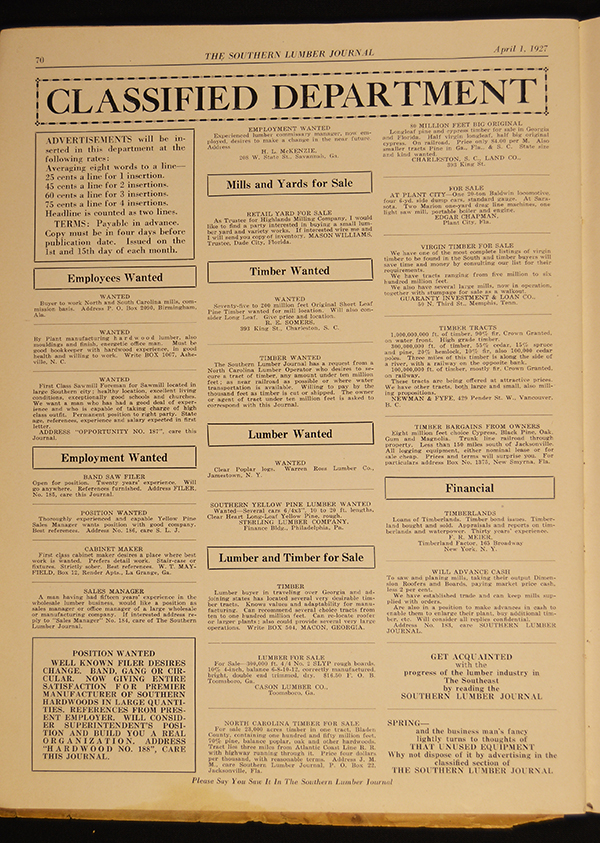
Naturally there are classified ads for everything wanted and available, from jobs and workers to lumber and tools. They offer some insights into the times; how confident workers are seeking new positions and how much timber the mills want- “Seventy five to 200 million (board) feet...”
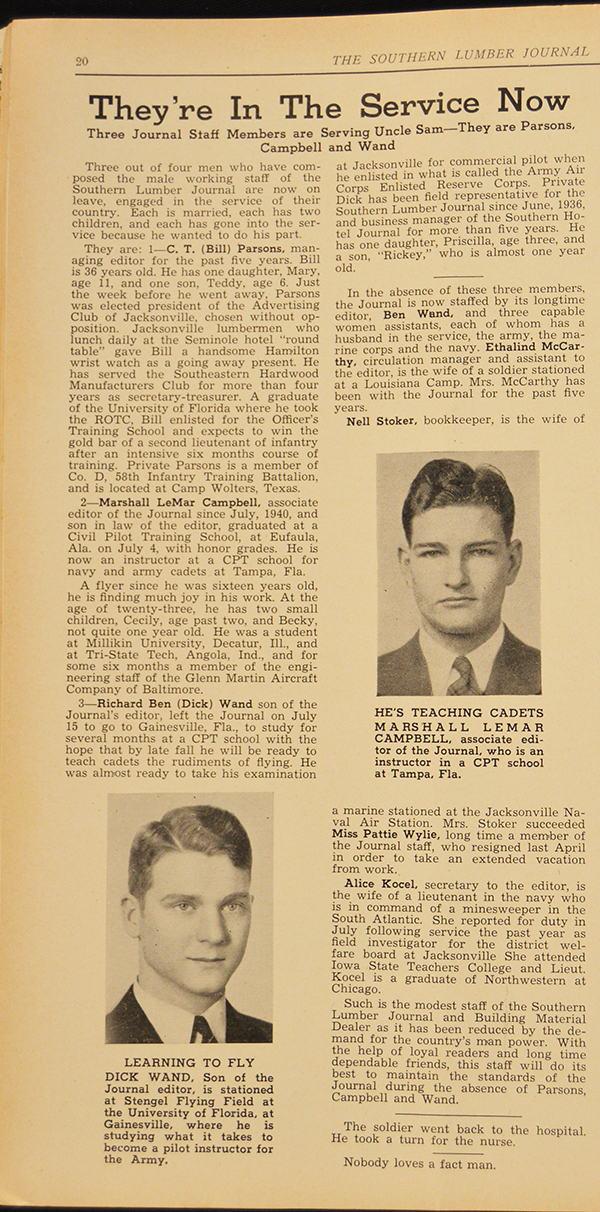
There are profiles of the (mostly) men in the industry, and by the 1940s the magazine was following them as they left the jobs they might have located through the classified ads to sign up to serve in the armed forces. This kind of detailed reporting can be very useful for family historians and genealogists.
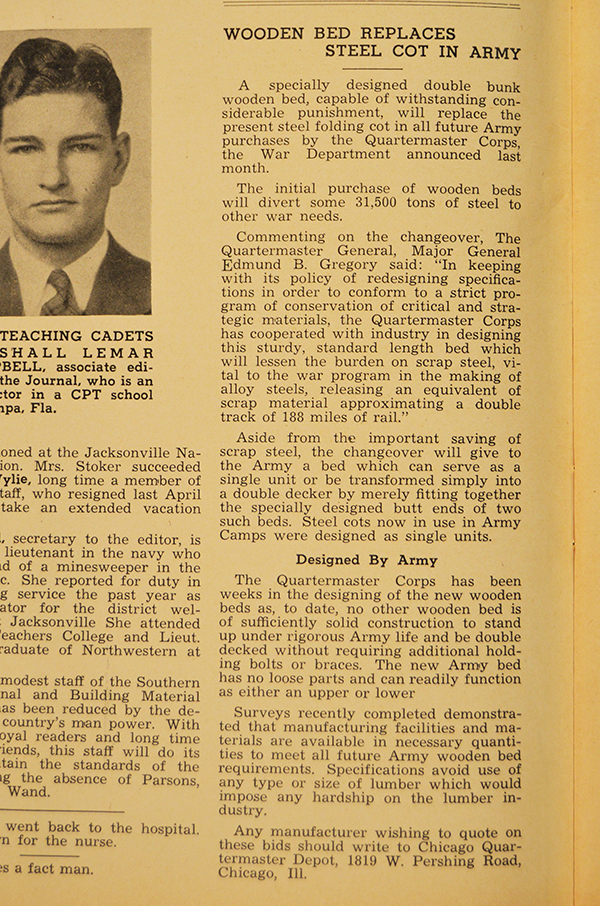
And there, tucked in right next to the profiles, an item for the industrial historian - an account of how wood was freeing up metal to be reprocessed into weapons, complete with an address of where to bid on the government contract.
Overall, this admittedly limited collection offers a detailed look at an industry in transition from the unfettered looting of an extensive natural resource to its more sustainable management.
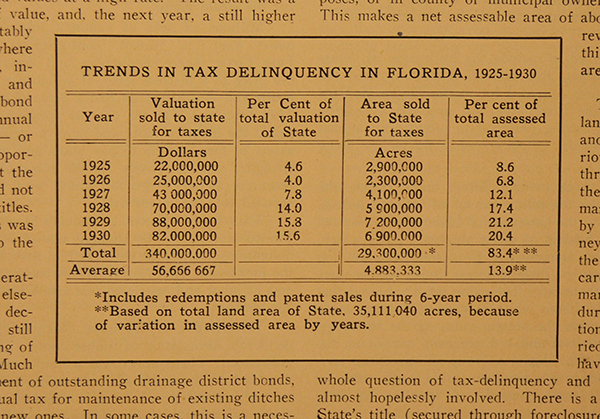
It provides data on the size of the industry at its height and the increasing role of the state as the money machine began to lurch.
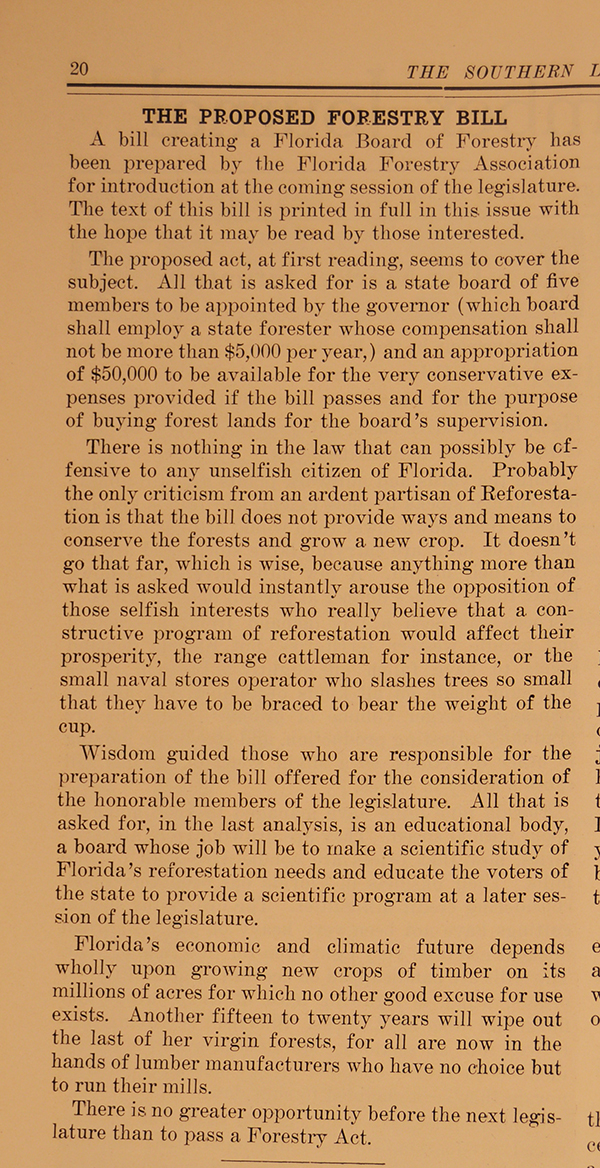
The reader can follow the careful political machinations involved in balancing competing business interests to give the state the managing authority it needed, and
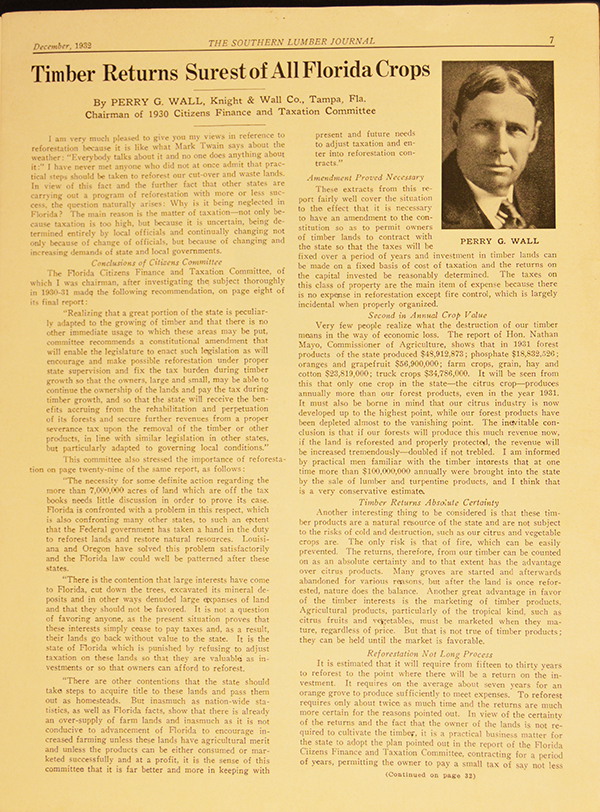
by 1932, the sometimes overly optimistic outlook of forest advocates (e.g. “...fire control, which is largely incidental when properly organized.” and “Reforestation Not Long Process”). (https://www.fdacs.gov/Divisions-Offices/Florida-Forest-Service)
In retrospect these projections seem laughable.
And, speaking of laughable:
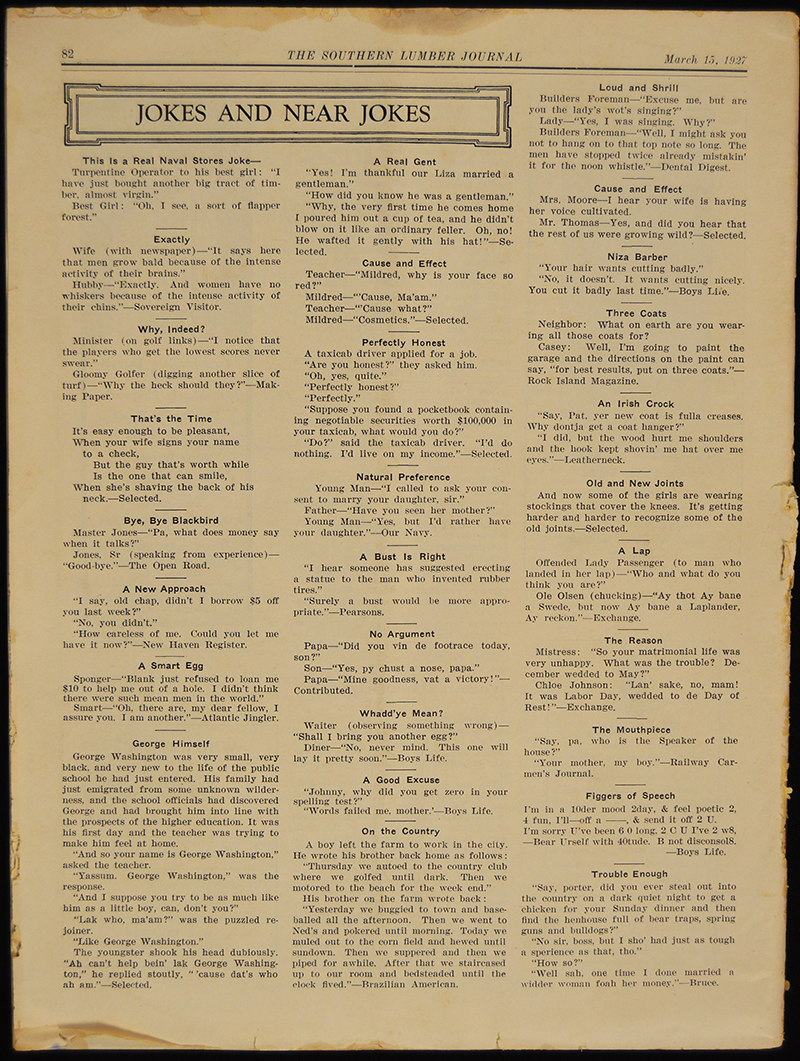
There is the aptly-named humor feature on the back page. Who knew Florida’s forests would be, at least indirectly, the source of ‘Dad Jokes’?







